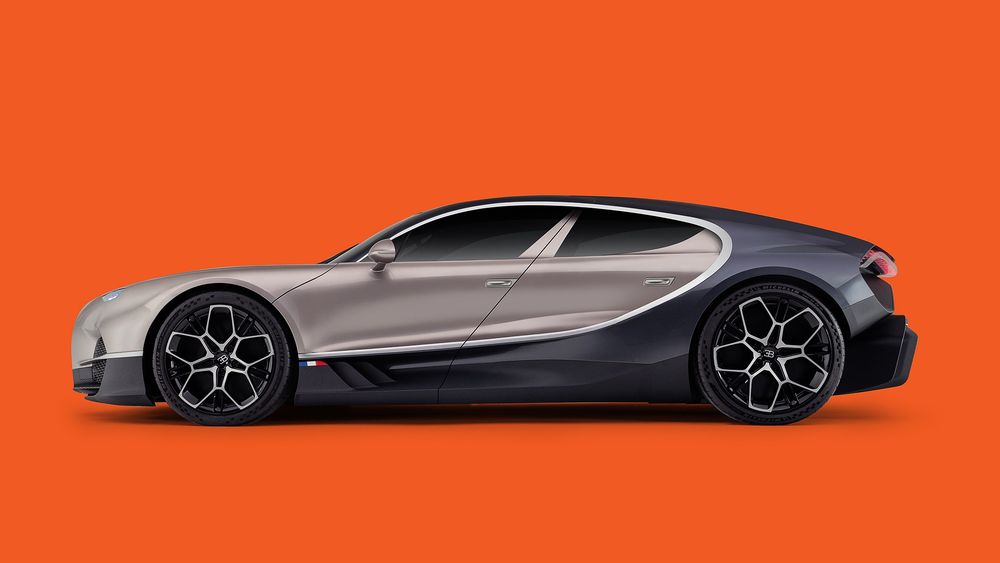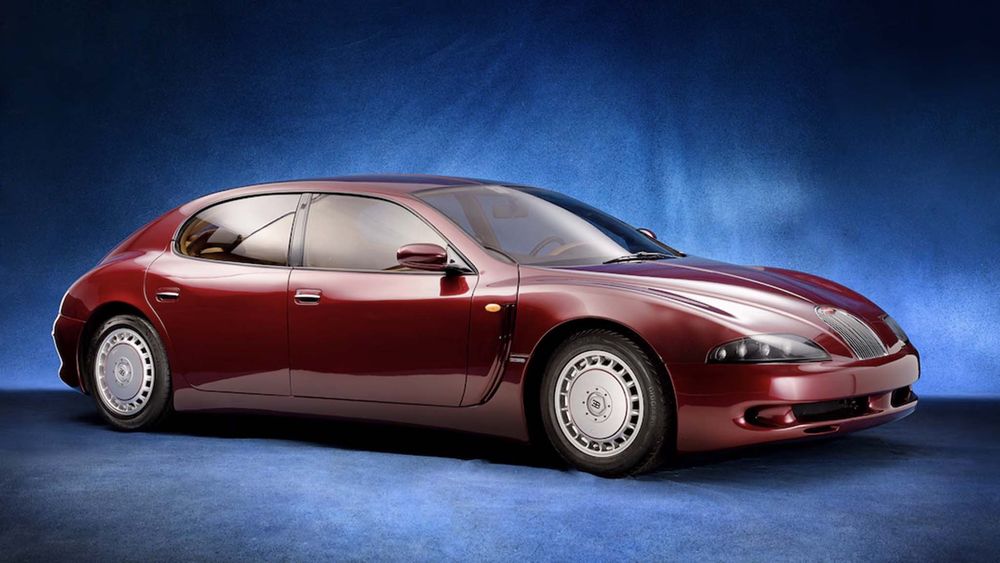What Will Bugatti’s Next New Model Be After the 2027 Tourbillon? Will It Be an SUV?
As Bugatti reveals its hypercar replacement for the Chiron, its next model comes into focus.
The 2027 Bugatti Tourbillon hypercar just came into public view, but the company’s boss is already looking ahead to his next challenge. While a slew of one-off special editions is unquestionably in the pipeline, new Bugatti Rimac head Mate Rimac hopes to be the first in a long line of Bugatti CEOs to introduce a second consistent model to the lineup. But what could that car model be? A chat with Rimac during a Tourbillon backgrounder late last year in Berlin shed some light on his thinking, be it a Bugatti SUV or sedan.
0:00 / 0:00
Looking For Clues About the Second Bugatti
The car that almost became the new Bugatti Tourbillon is our first clue. Early internal meetings with Volkswagen and Porsche brass to discuss what would become the Bugatti Chiron’s successor focused heavily on EVs—specifically an electric hypercar or electric SUV based on the Rimac Nevera. Rimac tells us this would’ve been the easiest thing in the world to develop, especially considering Rimac was already building a Nevera variant (the Battista) for Pininfarina. Yet he was adamant this was the wrong direction for Bugatti.
“Yes to progress, but not at the expense of passion,” Rimac said. Passion, in this case meaning a large V-16 to anchor a cutting-edge tri-motor plug-in hybrid system. Bugatti buyers, according to Rimac, simply aren’t ready for full EVs just yet. Given modern emission realities—not to mention the performance benefits—the second Bugatti will almost certainly be a PHEV, too, not a full EV.
Our second clue is in the positioning of the new 2027 Bugatti Tourbillon. Bugattis have always been luxury goods, but with its new $4.3 million PHEV hypercar, Bugatti is making a play at also being considered art—even going so far as to spin up a design team. The team’s purpose? To ensure the chassis looks as pretty as its Type 57SC–inspired exterior and intricate cabin, the latter complete with watch-like dials and crystal switchgear. When considering a second Bugatti, Rimac tells us the more useful a luxury product is, the less value it ultimately retains. In the automotive world, that means when debating between an uber-luxury sports car and an SUV with the same starting price, collectors will prefer a car model over a sport utility offering.
What This Tell Us
Rimac certainly sees value in a Bugatti that seats more people than does the Tourbillon and its predecessors, but he seems unconvinced a Bugatti SUV is the proper path forward. He points to the Koenigsegg Gemera as a clever model to mirror. The Gemera appears to be a conventional two-door mid-engine hybrid supercar, but it cleverly packages 2+2 seating into the cabin. A stretched and restyled Tourbillon could very well satisfy Rimac’s desire for a four-seater Bugatti that retains its intrinsic value without becoming a commodity car of sorts.
Bugatti could also look back at its recent history for inspiration.
Previous Attempts
Rimac knows history’s headwinds are against him. Bugatti has come close to introducing a second model twice in the past three decades. In the mid ’90s, just before it went out of business for the second time, the company was close to introducing the EB112 sedan to join the EB110 supercar in its lineup. The EB112 was an Italdesign-penned two-box four-door sedan powered by a bespoke 6.0-liter V-12 producing 455 horsepower and paired with a six-speed manual gearbox. Bugatti at the time promised a 4.4-second run from 0 to 60 mph and a 186-mph top speed. Had Bugatti released the EB112 as intended in 1995 or 1996, it would have been among the fastest sedans on the road. Unfortunately, the company folded amid a recession in September 1995 before the EB112 could reach customers.
Bugatti’s next owner, Volkswagen, tried its hand multiple times at producing a stablemate for the Veyron and then the Chiron hypercars.
The first effort was 2010’s 16C Galibier concept. This four-door sedan blended the stillborn EB112’s styling cues with the then-contemporary Veyron. The sedan, which was supposed to sticker for $1.5 million, was notably powered by the Veyron’s 8.0-liter W-16. Losing its four turbochargers in favor of two superchargers, the engine was plucked from behind the cabin and wedged under an elegant nose that paid homage to Bugatti’s pre–World War II heyday. Despite initial interest from Bugatti customers (though they reportedly demanded changes to the interior to make it more luxurious), dysfunction at Volkswagen as Bugatti churned through CEOs shelved the program in 2013.
The Galibier was brought back to life again briefly in 2016, but by the time Rimac’s predecessor Stephan Winkelmann came on the job in 2018, it was dropped in favor of an SUV. Though images have never leaked, this fastback coupelike electric Bugatti SUV was far enough along in the design process that the company began shopping this early version to potential buyers. With VW already flirting with the idea of selling Bugatti to a Porsche–Rimac joint venture, budget for further development went unallocated. With the company officially in Rimac’s hands in 2021, it’s likely this unnamed Bugatti SUV was the one he fought hard against in favor of what ultimately became the Tourbillon.
I generally like writing—especially when it’s about cars—but I hate writing about myself. So instead of blathering on about where I was born (New York City, in case you were wondering) or what type of cars I like (all of ’em, as long as it has a certain sense of soul or purpose), I’ll answer the one question I probably get most, right after what’s your favorite car (see above): How’d you get that job? Luck. Well, mostly. Hard work, too. Lots of it. I sort of fell into my major of journalism/mass communication at St. Bonaventure University and generally liked it a lot. In order to complete my degree senior year, we had to spend our last two semesters on some sort of project. Seeing as I loved cars and already spent a good portion of my time reading about cars on sites such as Motor Trend, I opted to create a car blog. I started a Tumblr, came up with a car-related name (The Stig’s American Cousin), signed up for media access on a bunch of manufacturer’s websites, and started writing. I did everything from cover new trim levels to reviewing my friends’ cars. I even wrote a really bad April Fool’s Day post about the next Subaru Impreza WRX being Toyota-Corolla-based. It was fun, and because it was fun, it never felt like work. Sometime after my blog had gotten off the ground, I noticed that Motor Trend was hiring for what’s now our Daily News Team. I sent in my résumé and a link to my blog. I got the job, and two weeks after graduation I made the move from New York to California. I’ve been happily plugging away at a keyboard—and driving some seriously awesome hardware—ever since.
Read More



